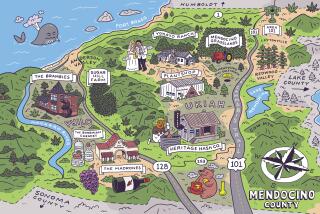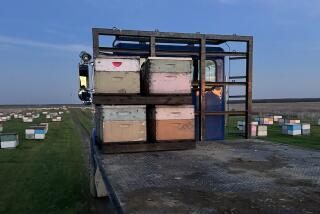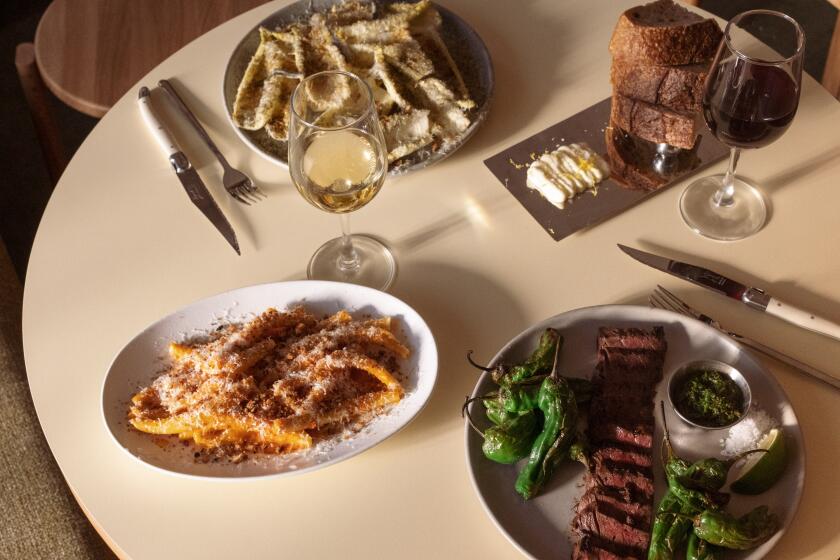Honey got me hooked on you: A conversation with an expert beekeeper
Six years ago, Tucson native and sommelier Noel Patterson began amateur beekeeping after receiving a hive as a gift from a skilled local apiarist. Once he’d honed his skills an as apiarist, he turned pro and founded Dos Manos Apiaries, which has constructed and continues to maintain over 40 hives throughout the local area using natural, treatment-free methods. Today, Patterson uses his extensive knowledge of wine and honey to lead tasting classes on both, which he developed for guests of Miraval Arizona Resort & Spa.
Here, the adept apiarist gives us the full story behind his fateful foray into beekeeping, what influences the taste and color of a certain hive’s honey, and his recommended way to enjoy it.
The Daily Meal: How did you first become interested in bees and learning to be a beekeeper?
Noel Patterson: I never intended to be a professional beekeeper; I was working in the wine business and was very happy with my career, but one year for my birthday, my girlfriend at the time unexpectedly gave me a beehive. She’s a talented organic farmer and built me a hive herself. It was such a kind gesture, and it inspired me to learn everything I could about bees and how to keep them responsibly. Everything I learned was fascinating, and I soon started keeping bees for friends and colleagues around Tucson.
How does your background as a sommelier and wine sales rep help you understand honey?
I believe that my background in wine has given me an especially unique perspective in understanding honey. Wine captures what is essential to a place, and it looks and tastes different depending on the soil, climate and other environmental properties of that place. Honey does exactly the same thing, but in an even more direct and interesting way. I think it would be hard to see that without studying wine.
Which environmental factors impact a honey’s color?
Different honeys are going to be different colors based on the nature of the nectar that it comes from. For example, honey made in an avocado grove will be darker, while honey made from an area predominantly filled with acacias will tend to be lighter and almost clear.
Do dark honeys tend to have a certain flavor, and light ones another? What causes honeys to taste different from one another?
While this isn’t true all of the time, it’s generally a good guideline that the color of the honey will be indicative of the intensity of the honey flavor. Darker honeys will usually be more intensely flavored than lighter honeys. There are more than 600 different chemical compounds in honey that contribute to its flavor, everything from minerals, to enzymes, to other organic compounds. The mixture of those compounds is wildly different from one honey to the next depending on the mix of flowers it came from.
At Miraval there are hundreds of different plant species that each add a unique signature flavor to the honey. It’s possible to isolate flowers to get interesting flavors, such as putting a hive in an orange grove to get honey that tastes like oranges. But more often than not, your honey is going to be made of a mix of hundreds of flowers, making the honey more of a representation of the place than of its flowers.
Do you have a favorite type of honey for a charcuterie board?
I think most honeys would work well on a charcuterie board. But to make it interesting, I’d recommend pairing charcuterie with herbal honeys. These aren’t herbal-infused honeys, but rather honeys from hives that are surrounded by herbal flowers. There’s a producer in Italy that I especially like, Mieli Thun, that isolates herbal flower blooms, and he makes a 100% rosemary honey, a 100% oregano honey, and a 100% thyme honey. I think the herbaceous character of these would work well.
What’s your favorite aspect of beekeeping?[pullquote:right]
I love that I get to work outside in beautiful places. More than that, I get to commune with this incredibly intelligent animal that has this complex society but lives in this state of perfect harmony within itself and its environment around it. It’s a magical thing to partake in and observe up close.
What’s your favorite dish that uses honey as an ingredient?
I love quality foods prepared in a simple fashion. I’ve worked in very high-end restaurants and admire the artistry of chefs, but at the end of the day, there’s nothing better than the inherent flavor of a beautiful sun-ripened heirloom tomato right off the vine, prepared simply with olive oil and a little salt. That’s how honey is, too.
I prefer to have honey simply, right from my fingers dipped into the jar. Or prepare a plate with a little honey and cheese, or with good bread and a pat of cultured butter. Honey and nuts are also a really beautiful combination. The saltiness of the nuts is a nice foil for the sweetness of the honey.
More to Read
Eat your way across L.A.
Get our weekly Tasting Notes newsletter for reviews, news and more.
You may occasionally receive promotional content from the Los Angeles Times.









